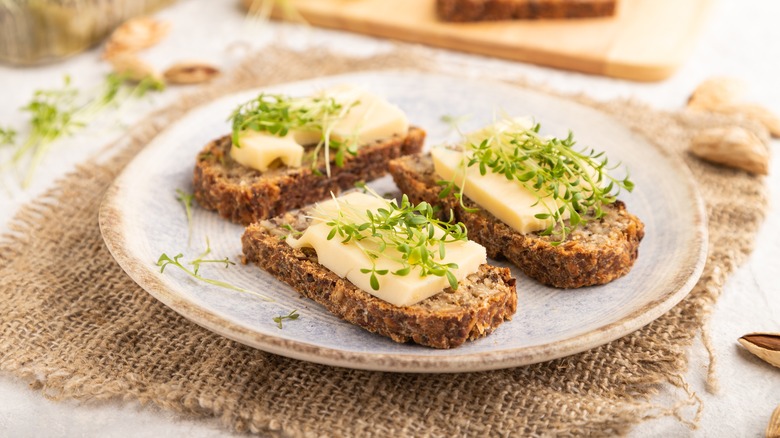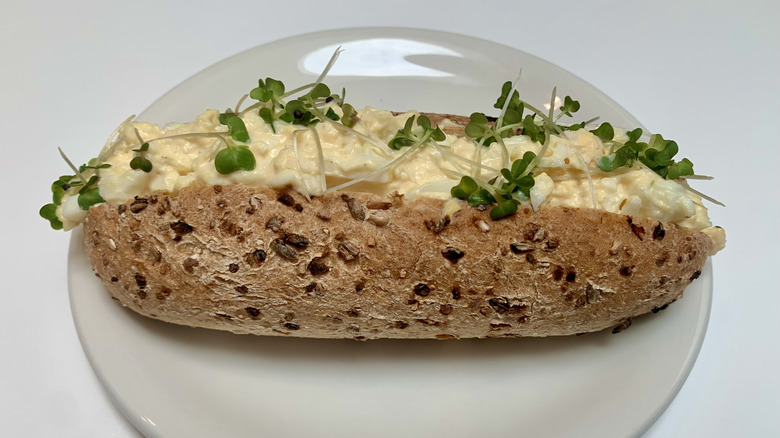How The World Wars Made Watercress Sandwiches A British Favorite
Not only do the British speak a bit differently than we do in the U.S., but their foodways aren't quite the same, either. We never seem to agree on food terminology, for one thing: chips vs. fries, biscuits vs. cookies, etc. While, for another, certain foods that are popular in the U.K. never really seemed to get big on this side of the pond — baked beans for breakfast, mince pies and plum pudding as classic British Christmas fare, or jellied eels and black (aka blood) pudding for, well, everything. Add to this list watercress sandwiches, not because the idea of greens on bread is particularly horrifying, but because it seems kind of, well, incomplete.
The fact that we feel this way in the U.S. may serve as a testament to the fact that we've been fortunate enough not to experience much in the way of food rationing over the past century or so (though there was a limited amount during World War II). The British, however, experienced stringent rationing during and even after World War I, only to experience it once again during World War II and, in some cases, for nearly a decade after the war was over.
For this reason, victory gardens weren't just a form of patriotic virtue signaling, but a necessity for many people, and watercress made for a nutritious sandwich filling that didn't cost a single ration coupon (or any money) to make. By the latter half of the 20th century, the watercress sandwich habit was firmly ingrained.
Watercress has gone from poverty food to fancy fare
World War I wasn't the first time watercress was grown in the British Isles, nor was it the first time people there tried eating the stuff. The history of watercress cultivation seems to date back to the turn of the 19th century, at which time people started using it in salads. A few decades earlier, though, the British Captain James Cook (the dude credited with "discovering" Hawaii) was feeding it to his sailors to keep them from coming down with scurvy.
By Victorian times, which also coincided with the rise of British rail transport, watercress was made available to people all over the country. It must have been relatively cheap, too, because the BBC relates that it earned the nickname "poor man's bread." During the World Wars of the following century, however, not just the poor but also the rich and everyone in between was affected by food rationing, so watercress found its way into everybody's diet.
Once watercress sandwiches went mainstream, the rising postwar tide floated their boat to the extent where they have since achieved even loftier heights — they are now even a staple of afternoon tea (which, unlike high tea, is a fairly fancy meal) at the ritzy Ritz. Watercress has also been discovered by hipsters — because, of course, it has. These days, it's also possible to have sandwiches made from watercress hummus, watercress pesto, and artisanal watercress sausages.

